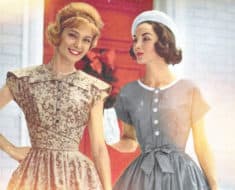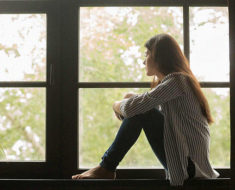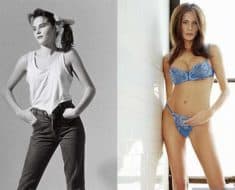
Wallpaper Safari
A lot of changes have happened in dance over the years, and with it, the outfit that dancers wear. It is an indication of many things, from social norms becoming more liberal, the changing fashion trends relevant to society, to the evolving fabric technology. Here’s a look at how women’s dancewear, along with many other things, evolved as time passed.
Dancewear for women in the 19th century
In the 1800s, the ballet was by far the most popular dance in the world. When it was first introduced, the dancers wore masks, brocade, corseted dresses, and tutu skirts. Their dancing shoes had heels and look similar to today’s dress shoes. It gave the dancers an exquisite look, but their movements were restricted.
It was a reflection of society’s standards for modesty at the time where women were discouraged from wearing short skirts. It was also indicative of the way how a person’s status is often judged with the cost or quality of clothing worn, a sign of distinction between classes.
Dancewear for women in the 20th century
Towards the end of the 19th century, the tutu skirt evolved into a layered gauze, which was much lighter. Eventually, women dancers shed corseted dresses and started wearing draped tunics and dancing on bare feet. As the standards of society relaxed even further, more dancers started wearing leotards more, highlighted with sequins and feathers.
The movies started to gain influence on society in the 1930s, and it manifested in the development of other dance types. Ball gowns began gaining popularity due to the fashion trends shown in the films. Dancers began taking the cue from the glitz and glamour of movies and musicals such as Swing and started wearing dresses and evening gowns even on the dancefloor.
When Broadway started in the 1940s, ordinary people had the chance to watch all types of dances other than ballet, which is previously seen only by the wealthy. It influenced fashion trends and the dance outfit women wear over the next two decades. Women dancers were able to wear sexy and elegant leotards allowing greater flexibility and freedom of movement for swing dancing in the 1960s. It was also around this time that Lycra and Spandex were used as materials for women’s dancewear.
Disco made a big splash in the 1970s, and it gave way to bellbottoms and halter neck tops. Although, tight leotards remained relevant due to the influence of music stars who wore dance trunks and leg warmers. By the 1990s, dancewear became so personalized with the development of modern dancewear materials and an assortment of influences. Parachute pants from hip hop became very popular. The tight styles from the 1960s and loose, flowing dancewear from the 1970s were given updated looks and were still visible on dancefloors everywhere.
Today’s dancewear for women
Today’s dance scene is as popular as it is varied. New styles have arrived while the old ones are still accessible on TV or on the internet. Going to the ballet is still relevant, and the outfit that ballet dancers wear has been significantly redesigned from the old days of the tutu skirt.
In modern-day women’s dancewear, there is no one rule or trend. Everything is so fluid, and it is hard to say what the future holds for it. The only discernable pattern is that, with sportswear technology entering the scene recently, fabric in women’s dancewear will continue to get even better.
Author: Sarah Williams









































